Ancient Beauty Treatments
The Earliest Forms of Aesthetic Medicine
Imagine a time when beauty treatments didn’t involve synthetic chemicals but instead relied on nature’s purest ingredients. Ancient civilizations mastered the art of skincare, creating timeless beauty rituals that continue to inspire modern practices. From the luxurious milk baths of Egyptian queens to herbal infusions in Chinese medicine, early beauty treatments were deeply rooted in both tradition and science.
But what exactly made these remedies so effective? And how have they influenced today’s skincare industry?
In this article, we’ll explore ancient beauty secrets, from Egyptian skincare rituals to herbal cosmetic traditions in Asia and the Mediterranean. You’ll discover the natural ingredients, techniques, and innovations that shaped modern dermatology and how some of these ancient methods are still in use today.
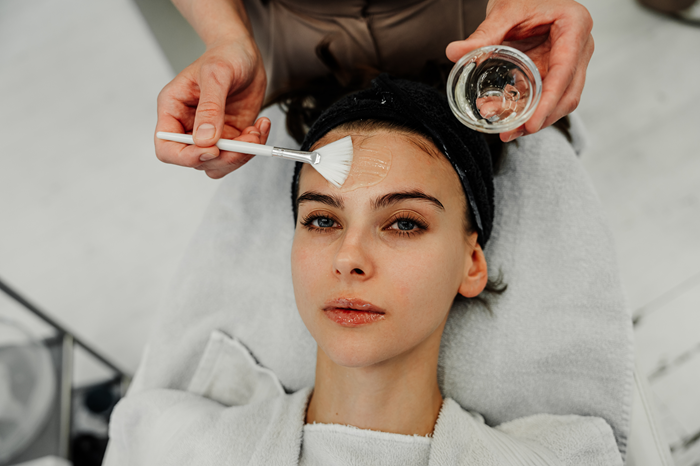
Ancient Skincare Techniques: Timeless Beauty Practices
Since the dawn of civilization, people have sought ways to maintain healthy, youthful skin. Ancient skincare techniques focused on natural ingredients, holistic approaches, and plant-based remedies, many of which are still used today.
The Evolution of Skincare from Early Civilizations
Long before commercial skincare products, ancient societies relied on botanical extracts, oils, and minerals to cleanse, nourish, and protect their skin. These methods weren’t just about aesthetics they were deeply connected to health, spirituality, and cultural traditions.
Here’s how different civilizations approached skincare:
- Egyptians: Known for milk baths, essential oils, and exfoliation rituals to maintain smooth, radiant skin.
- Greeks & Romans: Used olive oil, honey, and clay masks to hydrate and purify the skin.
- Chinese & Indian Traditions: Focused on herbal medicine and Ayurveda, incorporating turmeric, sandalwood, and rice water for anti-aging benefits.
Ingredients Used in Ancient Skincare
Many of the ingredients ancient civilizations relied on are still popular today for their skin-enhancing properties:
- Honey: A natural humectant that hydrates, soothes, and heals the skin.
- Milk: Contains lactic acid, which gently exfoliates and improves skin texture.
- Essential Oils (Frankincense, Myrrh, Rose): Used for anti-aging, hydration, and calming irritated skin.
- Clay Masks: Absorb excess oil, detoxify pores, and improve skin clarity.
- Herbal Remedies (Turmeric, Aloe Vera, Green Tea): Have anti-inflammatory and antioxidant properties that fight aging and improve complexion.
How Ancient Methods Influence Today’s Beauty Trends
Many modern skincare trends take inspiration from ancient beauty practices. Some examples include:
- Oil Cleansing: A method inspired by Egyptian and Ayurvedic skincare, where oils dissolve dirt and excess sebum.
- Herbal Face Masks: Rooted in Chinese and Ayurvedic traditions, these masks use clay, turmeric, and botanical extracts for skin renewal.
- Exfoliation with Natural Scrubs: Ancient Greeks and Egyptians used crushed seeds and minerals for exfoliation similar to today’s scrubs and microdermabrasion.
- Jade Rolling & Gua Sha: Traditional Chinese beauty tools that help with lymphatic drainage and facial sculpting.
Traditional Egyptian Beauty Rituals and Their Influence Today
Ancient Egypt is often considered the birthplace of beauty rituals, with skincare being an essential part of daily life. Egyptian royalty, including Cleopatra and Nefertiti, were known for their elaborate beauty routines, many of which have stood the test of time. Their holistic approach to skincare combined natural ingredients, spiritual beliefs, and medicinal practices, influencing modern skincare in unexpected ways.
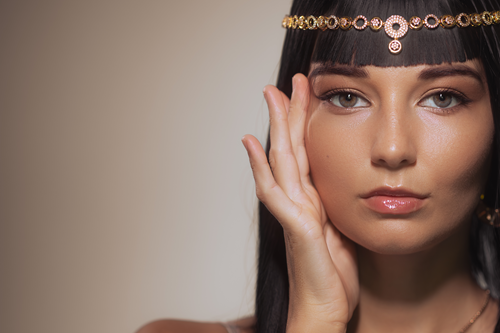
Egyptian Queens and Their Beauty Secrets
Egyptian women, especially those of high status, took skincare seriously. They believed radiant skin reflected health, power, and divine favor. Some of their most famous beauty secrets include:
- Cleopatra’s Milk & Honey Baths: Cleopatra was known to bathe in fermented milk mixed with honey, which provided gentle exfoliation and hydration thanks to lactic acid. This practice inspired modern-day lactic acid peels and luxurious milk-based skincare products.
- Aloe Vera for Hydration: Egyptians discovered that aloe vera gel could soothe, heal, and hydrate the skin. Today, it remains a staple in after-sun care and moisturizers.
- Olive Oil & Rose Water: Used as natural cleansers and moisturizers, olive oil provided deep hydration, while rose water had anti-inflammatory and toning properties.
Ingredients Used in Egyptian Skincare
The Egyptians used naturally derived ingredients that were widely available in their environment. Some of these include:
- Sea Salt & Honey Scrubs: Used for exfoliation to remove dead skin cells and promote smooth skin.
- Black Seed Oil: Known for its antioxidant and healing properties, helping to reduce inflammation and acne.
- Red Clay & Charcoal Masks: Used to detoxify the skin and remove impurities similar to today’s charcoal masks.
- Frankincense & Myrrh: These resin-based extracts had anti-aging properties and were often infused into creams and perfumes.
Traditional Egyptian Cosmetic Techniques & Their Modern Adaptations
Egyptian beauty practices laid the foundation for many skincare and cosmetic techniques we use today.
- Kohl Eyeliner: Originally used to protect against sun glare and eye infections, kohl eyeliner evolved into a beauty staple that remains popular worldwide.
- Henna for Hair & Nails: Egyptians used henna to dye their hair and strengthen nails, a practice still used today in natural hair dye and nail treatments.
- Exfoliation with Sea Salt Scrubs: Ancient Egyptians scrubbed their skin with sea salt and essential oils, a tradition that continues in spa treatments and body scrubs.
Historical Cosmetic Practices Across Civilizations
While Egyptians pioneered many skincare techniques, they weren’t the only civilization to develop advanced beauty rituals. Across the world, different cultures experimented with herbs, minerals, and oils, creating treatments that continue to influence modern skincare. From Chinese herbal medicine to Greek olive oil therapies, each civilization contributed something unique to aesthetic medicine.
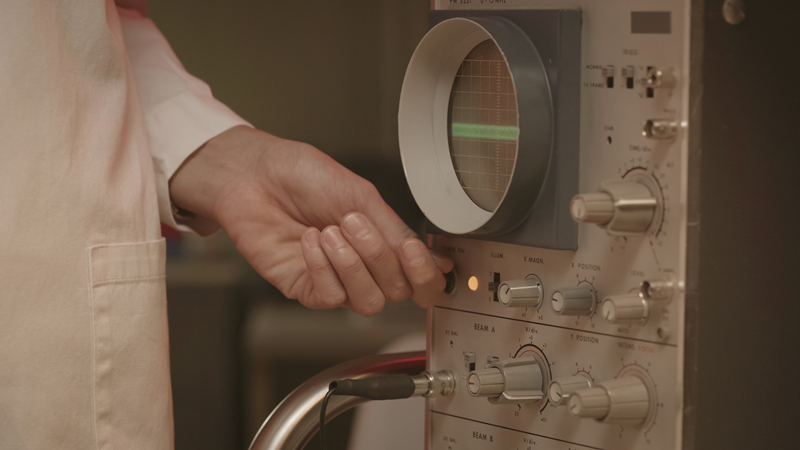
The Influence of Chinese and Indian Skincare Traditions
Both China and India have thousands of years of beauty wisdom, focusing on balance, healing, and longevity.
- China: Traditional Chinese Medicine (TCM) emphasized the role of herbs, acupuncture, and massage in skincare. Popular practices included:
- Gua Sha & Jade Rolling: Ancient facial massage techniques to improve circulation and reduce puffiness.
- Rice Water Cleansing: Used by Chinese women for centuries to brighten and soften the skin.
- Green Tea Extracts: Packed with antioxidants, green tea was used in toners and masks for anti-aging benefits.
- India: Ayurvedic beauty revolved around the concept of doshas (body energies) and used plant-based remedies to restore balance. Common treatments included:
- Turmeric Masks: Turmeric’s anti-inflammatory properties made it a go-to remedy for acne and pigmentation.
- Sandalwood & Rosewater Paste: A cooling mask used to even skin tone and reduce redness.
- Coconut Oil Therapy: Used for moisturizing, deep conditioning, and sun protection.
Greek and Roman Contributions to Aesthetic Medicine
The Greeks and Romans viewed skincare as an essential part of health and hygiene. They combined luxury, science, and tradition to develop beauty treatments that influenced modern dermatology.
- Greek Skincare:
- Olive Oil for Hydration: Used as a natural moisturizer and anti-aging treatment.
- Honey & Yogurt Masks: Applied for skin nourishment and exfoliation.
- Herbal Steam Baths: Used for detoxifying the skin and relaxing the mind.
- Roman Skincare:
- Thermal Baths & Steam Therapy: Romans enjoyed hot baths infused with essential oils to cleanse and soften skin.
- Clay & Mud Masks: Used to draw out toxins inspiring today’s deep-cleansing face masks.
- Crushed Pearls & Minerals: Used in creams for skin brightening and exfoliation.
The Use of Clay Masks, Turmeric, and Herbal Concoctions
Many civilizations independently discovered the benefits of natural masks and herbal treatments:
- Clay Masks: Used in Egypt, Rome, and China for deep cleansing, oil control, and detoxification.
- Turmeric: A staple in Indian and Middle Eastern skincare for its anti-inflammatory and brightening effects.
- Herbal Mixtures: Civilizations blended lavender, chamomile, and rose petals into oils and pastes to nourish and heal the skin.
Ancient Cosmetic Techniques: Herbal Remedies and Natural Solutions
Throughout history, herbs and plant-based remedies played a crucial role in beauty treatments. Ancient civilizations relied on nature’s healing power to cleanse, hydrate, and rejuvenate the skin. These techniques remain relevant today, as modern skincare embraces botanical extracts and organic formulations.
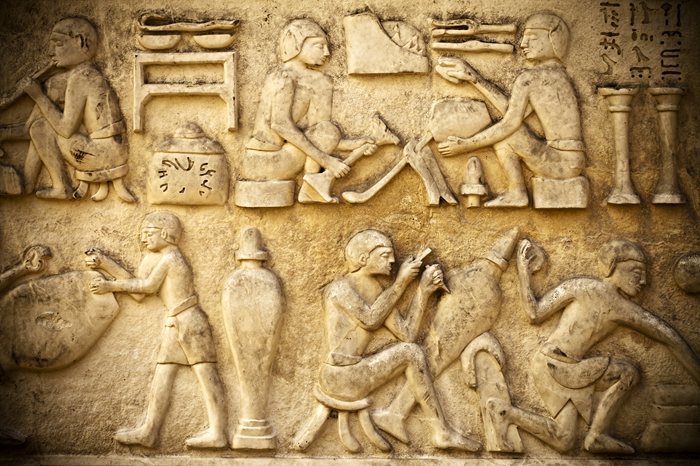
Popular Herbal Beauty Remedies from Ancient Civilizations
Many ancient skincare remedies were based on the use of herbs, flowers, and natural oils, which had specific benefits for the skin:
- Aloe Vera (Egyptians & Indians): Used as a natural moisturizer to heal burns, soothe irritation, and hydrate the skin.
- Chamomile (Romans & Greeks): Brewed into tea or infused into oils to reduce redness, calm inflammation, and brighten the complexion.
- Neem (Indian Ayurveda): A powerful antibacterial herb used in acne treatments, anti-aging masks, and scalp care.
- Lavender (European & Middle Eastern Cultures): Known for its calming and healing properties, it was used in fragrances, skincare, and stress-relief treatments.
- Rose Water (Persians & Egyptians): A staple in beauty routines, rose water helped tone, hydrate, and refresh the skin.
The Role of Plant-Based Ingredients in Skincare
Ancient people understood that botanical extracts could enhance beauty naturally. They used crushed herbs, essential oils, and floral waters to create early versions of modern beauty products:
- Natural Exfoliants: Ground almonds, crushed pearls, and sea salt were mixed into pastes to remove dead skin cells.
- Anti-Aging Elixirs: Frankincense, myrrh, and saffron were infused into oils to slow signs of aging and enhance skin glow.
- Herbal Infusions for Skin Conditions: Mint and basil were used to treat acne, while turmeric and licorice brightened the skin.
How Natural Remedies Were Used to Treat Skin Conditions
Before synthetic medicine, people relied on herbal solutions to manage common skin problems:
- Acne & Blemishes: Clay masks with turmeric, honey, and neem helped reduce inflammation and clear pores.
- Sunburn & Dry Skin: Aloe vera and coconut oil were used for hydration and sun protection.
- Anti-Aging & Wrinkles: Rosehip oil, almond oil, and frankincense were applied to reduce fine lines and maintain elasticity.
Many of these ancient herbal remedies have been scientifically validated for their effectiveness, making them a cornerstone of natural and organic skincare today.
How Did Ancient Egyptians Care for Their Skin?
The Ancient Egyptians were pioneers in skincare and beauty treatments, believing that radiant skin was a sign of health, divinity, and status. Their skincare routines were meticulously crafted, incorporating oils, herbs, and minerals to keep their skin hydrated, smooth, and youthful despite the harsh desert climate.
The Importance of Oils and Natural Extracts
Egyptians relied heavily on oils and botanical extracts to nourish and protect their skin. Some of their most valued skincare ingredients included:
- Castor Oil & Almond Oil: Used for deep hydration and anti-aging properties. These oils helped maintain the elasticity and suppleness of the skin.
- Moringa Oil: A luxurious oil that cleansed and brightened the skin, commonly used in facial treatments.
- Olive Oil & Frankincense: Acted as natural moisturizers with anti-inflammatory benefits. These ingredients are still found in modern beauty products today.
Egyptians also applied fragrant oils infused with floral and herbal extracts as part of their beauty routine. These oils served a dual purpose of nourishing the skin and acting as natural perfumes.
Exfoliation and Natural Scrubs
Exfoliation was an essential part of Egyptian skincare. To keep their skin smooth and blemish-free, they used natural scrubs made from:
- Sea Salt & Honey: A combination that removed dead skin cells while hydrating and healing the skin.
- Crushed Almonds & Clay Powder: Used to gently polish the skin, improving texture and glow.
- Powdered Alabaster & Sand: Used for deep exfoliation, particularly by the upper class to maintain a flawless complexion.
These ancient exfoliation techniques inspired modern microdermabrasion and chemical peels, proving that the Egyptians were ahead of their time in skincare innovation.
Why Ancient Beauty Rituals Still Matter Today
Many Egyptian beauty rituals have influenced modern skincare. Their emphasis on natural ingredients, hydration, and exfoliation can be seen in today’s beauty industry trends:
- Oil Cleansing: Inspired by Egyptian practices of using plant-based oils for makeup removal and cleansing.
- Face Masks & Scrubs: Modern exfoliating treatments still use honey, sea salt, and natural clays, just as Egyptians did.
- Herbal & Botanical Skincare: Ingredients like rose water, aloe vera, and moringa oil remain popular in natural skincare formulations.
The Ancient Egyptians’ meticulous approach to skincare laid the groundwork for many beauty practices we use today, proving that natural, time-tested ingredients never go out of style.
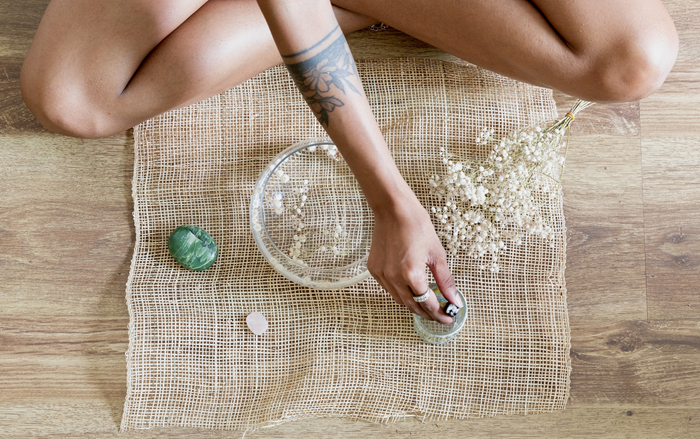
The Role of Early Cosmetic Medicine in Modern Skincare
Ancient beauty treatments weren’t just about aesthetics they were also deeply connected to medicine and healing. Many early cosmetic practices laid the foundation for modern dermatology and skincare innovations, demonstrating that skincare was both an art and a science.
The Transition from Ancient to Modern Dermatology
Long before dermatologists and cosmetic chemists, ancient healers and physicians experimented with natural ingredients and techniques to treat skin issues, scars, and signs of aging. Many of their discoveries remain relevant in modern skincare, such as:
- Fruit Acid Peels (Ancient Egyptians): Egyptians used fermented milk (lactic acid) and fruit extracts to create early versions of chemical peels that brightened and exfoliated the skin.
- Clay Masks (Mesopotamians & Romans): Used for detoxification, much like today’s charcoal and bentonite clay masks.
- Herbal Remedies (Traditional Chinese & Ayurvedic Medicine): Herbs like turmeric, neem, and chamomile were used to treat acne, inflammation, and skin infections similar to modern plant-based skincare.
How Early Aesthetic Medicine Paved the Way for Scientific Advancements
As civilizations advanced, so did their approach to skincare and aesthetic medicine. Many techniques and ingredients used in early societies have influenced modern dermatological treatments:
- Egyptian Anti-Aging Techniques → Modern Retinol & Peptides
- Egyptians applied botanical extracts and animal fats to reduce wrinkles and fine lines. Today, scientists use similar anti-aging compounds in retinol-based creams and serums.
- Roman & Greek Exfoliation Rituals → Modern Microdermabrasion
- Ancient Greeks and Romans used crushed minerals, ground pumice, and natural abrasives to exfoliate skin similar to today’s microdermabrasion and exfoliating scrubs.
- Chinese Herbal Medicine → Modern Natural Skincare & TCM-Based Beauty
- Traditional Chinese medicine used ginseng, goji berries, and licorice root to treat hyperpigmentation, dullness, and aging. Today, these ingredients are found in many brightening and anti-aging products.
Ancient Beauty Treatments That Inspired Today’s Skincare Innovations
Ancient civilizations unknowingly set the stage for many modern beauty treatments. Some of the most notable influences include:
- Microneedling (Inspired by Acupuncture): The concept of using tiny needles to stimulate collagen production originated from Traditional Chinese Medicine and has now evolved into microneedling for skin rejuvenation.
- Botanical Extracts & Essential Oils: Early societies used floral waters and plant-based oils to treat skin issues now found in modern organic and clean beauty products.
- Gold & Pearl Infusions: Ancient Chinese and Egyptian royalty used gold and pearl extracts in their skincare, which are still used today in luxury beauty serums and masks for anti-aging benefits.
Why This Matters Today
Ancient beauty treatments were more than just self-care—they were early forms of scientific skincare. By combining nature’s best ingredients with knowledge passed down for centuries, these civilizations shaped the beauty industry we know today.
Gua Sha and Rice Water: Ancient Skincare Methods Still Popular Today
While many ancient beauty treatments have been replaced by modern skincare innovations, some methods have stood the test of time. Two of the most popular ancient skincare practices still used today are Gua Sha and Rice Water, both originating from Traditional Chinese and Japanese beauty rituals.
The Rise of Gua Sha in Modern Skincare
Gua Sha, a Traditional Chinese Medicine (TCM) technique, has gained massive popularity in the modern skincare industry due to its skin-rejuvenating benefits. Originally used for body healing and circulation, it has evolved into a facial massage technique that improves skin health and appearance.
How Gua Sha Benefits the Skin:
- Boosts Circulation: Helps improve blood flow and oxygenation, leading to a brighter complexion.
- Reduces Puffiness: Encourages lymphatic drainage, reducing fluid retention and under-eye puffiness.
- Lifts & Sculpts the Face: Regular use promotes firm, toned skin by relieving muscle tension.
- Enhances Product Absorption: When used with facial oils, it helps skincare products penetrate deeper into the skin.
Today, Gua Sha tools made from jade and rose quartz are widely used in luxury facials and at-home skincare routines, proving that this ancient technique remains relevant in the beauty world.
Rice Water for Skin and Its Anti-Aging Properties
For centuries, Japanese and Chinese women have used rice water as a secret to youthful, glowing skin. Rice water is the starchy liquid left after soaking or boiling rice, packed with vitamins, minerals, and antioxidants that nourish the skin.
Key Benefits of Rice Water in Skincare:
- Brightens Skin Tone: Contains ferulic acid and niacinamide-like properties, which help fade dark spots and hyperpigmentation.
- Hydrates & Soothes: Soothing effects help calm inflammation, redness, and sensitivity.
- Reduces Fine Lines: The amino acids in rice water support collagen production, keeping skin firm and youthful.
- Balances Oil Production: Helps regulate sebum levels, making it ideal for oily and acne-prone skin.
How Rice Water is Used Today:
- Toners & Facial Mists: Many skincare brands now formulate rice water-infused toners to enhance skin hydration and glow.
- DIY Rice Water Rinse: Beauty enthusiasts worldwide continue to soak rice and use the water as a natural toner or face wash.
- Shampoos & Hair Treatments: In addition to skincare, rice water is also a popular remedy for hair growth and shine.
Ancient Beauty Secrets That Continue to Be Relevant
Both Gua Sha and Rice Water have been used for centuries and continue to shape modern beauty trends. Their proven effectiveness and natural approach to skincare make them highly sought after in today’s world of organic and holistic beauty treatments.
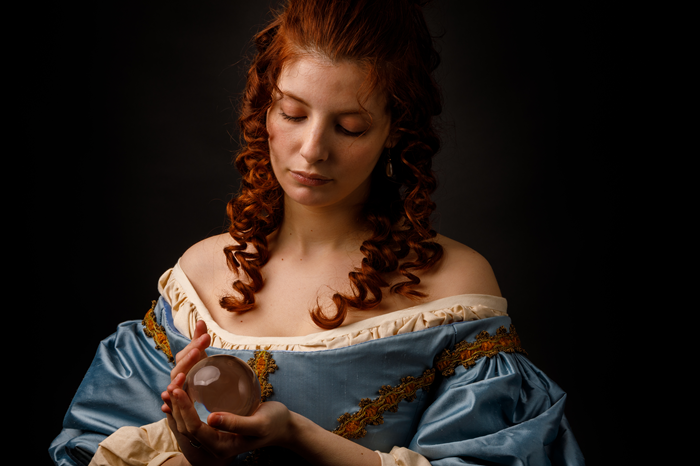
Conclusion
Ancient beauty treatments have stood the test of time, proving that natural, holistic skincare remains just as effective today as it was thousands of years ago. From the milk baths of Cleopatra to the Gua Sha techniques of Traditional Chinese Medicine, these time-honored rituals have shaped the way we approach skincare in the modern world.
Key Takeaways:
- Ancient civilizations valued skincare as part of health, beauty, and well-being.
- Many natural ingredients like honey, turmeric, and olive oil are still used in today’s beauty industry.
- Traditional beauty techniques, such as Gua Sha, oil cleansing, and herbal remedies, continue to influence modern skincare.
- Early cosmetic medicine laid the foundation for today’s dermatology and aesthetic treatments.
As skincare trends continue to evolve, we can look to history for inspiration, embracing botanical-based, chemical-free, and holistic beauty routines that have been used for centuries.
Ready to Transform Your Skincare Routine?
Want to bring ancient beauty secrets into your modern skincare regimen? Subscribe to our blog for more expert insights, beauty guides, and skincare tips that blend the best of the past with today’s science-backed innovations!
Frequently Asked Questions About Ancient Beauty Treatments
To help you understand more about ancient skincare techniques and their modern relevance, here are some commonly asked questions about ancient beauty treatments.
Q1: What were the beauty rituals in ancient cultures?
A: Ancient beauty rituals included oil cleansing, herbal masks, natural exfoliation, and anti-aging treatments. Civilizations like Egypt, China, India, and Greece relied on natural ingredients such as honey, turmeric, rose water, and essential oils to maintain healthy, youthful skin.
Q2: How did ancient Egyptians care for their skin?
A: Egyptians followed a holistic skincare routine that involved:
- Oil cleansing using castor oil, olive oil, and almond oil.
- Milk and honey baths for exfoliation and hydration.
- Sea salt scrubs and clay masks for deep cleansing.
- Rose water and aloe vera for soothing and toning the skin.
Q3: Are ancient beauty treatments still relevant today?
A: Absolutely! Many ancient beauty techniques are still used in modern skincare. Examples include:
- Gua Sha (China): Used for facial massage and lymphatic drainage.
- Rice Water (Japan & China): A natural brightening and anti-aging remedy.
- Turmeric Masks (India): Used for acne control and glowing skin.
- Clay Masks (Egypt, Greece, and Rome): Detoxifies and purifies the skin.
Q4: What is the significance of early cosmetic medicine?
A: Early cosmetic medicine laid the foundation for modern dermatology and skincare treatments. Many ancient remedies like fruit acid exfoliation, herbal anti-aging serums, and plant-based healing treatments influenced today’s chemical peels, retinol-based products, and botanical skincare formulations.
Q5: How did ancient people protect their skin from the sun?
A: Before sunscreen, ancient civilizations used natural sun protectants, such as:
- Shea butter (Africa) and coconut oil (India & Polynesia) as a barrier against UV rays.
- Rice powder (China & Japan) to absorb excess oil and reduce sun exposure.
- Henna and sandalwood paste (Egypt & India) for cooling and skin protection.
Q6: What natural ingredients did ancient cultures use for anti-aging?
A: Many ancient civilizations used botanical and mineral-based ingredients for anti-aging benefits:
- Frankincense & Myrrh (Egypt & Persia): To tighten skin and reduce wrinkles.
- Goji Berries & Green Tea (China): Packed with antioxidants to fight aging.
- Aloe Vera & Olive Oil (Greece & Egypt): Hydrated and protected against fine lines.
Q7: What role did herbal medicine play in ancient beauty?
A: Herbs were widely used in ancient beauty treatments for their healing, brightening, and anti-inflammatory properties. For example:
- Neem (India): Used for acne and antibacterial cleansing.
- Rosemary (Greece & Rome): Strengthened hair and improved circulation.
- Chamomile (Europe & Middle East): Soothed sensitive skin and reduced redness.
Q8: Did ancient people use makeup in their beauty routines?
A: Yes! Ancient civilizations not only focused on skincare but also used makeup for aesthetics and protection:
- Kohl Eyeliner (Egypt & Mesopotamia): To define the eyes and protect from infections.
- Henna (India & Middle East): Used for hair dye and body art.
- Crushed minerals (Rome & Greece): Blended with oils for natural lip and cheek color.
Q9: How did ancient cultures exfoliate their skin?
A: Ancient people used natural exfoliants to maintain smooth and glowing skin:
- Sea Salt Scrubs (Egypt & Greece): Removed dead skin and improved circulation.
- Ground Almonds & Pumice (Rome & China): Used as a natural face scrub.
- Lactic Acid from Milk (Egypt & India): Worked as an early chemical peel for brightening skin.
Q10: How can I incorporate ancient beauty treatments into my skincare routine?
A: You can incorporate ancient beauty secrets into your skincare regimen by:
- Using oil cleansing with natural oils like jojoba, almond, or coconut oil.
- Applying clay masks for deep cleansing and detoxification.
- Trying rice water toners for skin brightening and hydration.
- Using herbal face masks made from turmeric, aloe vera, or honey.
- Practicing Gua Sha or jade rolling to promote facial circulation and reduce puffiness.
